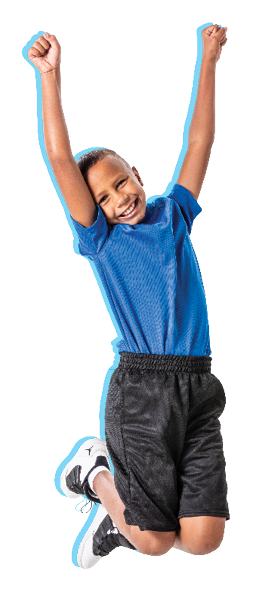Aroo, aroo! I became a Spartan on November 17th, 2018, and physical literacy is what got me through the toughest race of my life. While I’ve done similar activities before, I am no longer healthy or “in shape”. When I was in my mid-30s, my health started to rapidly decline due to a genetic condition called Ehlers-Danlos Syndrome (EDS). It started with general fatigue and muscle soreness, but the symptoms continued to pile up since then. After 4 years of trying to work through it, I was finally forced to quit teaching in 2017. Besides decreased functionality, teaching was causing so much pain afterwards that there were times where I would wake up in the middle of the night to myself groaning in pain.

So what is EDS? It’s a group of conditions that revolve around collagen defects. There are a dozen or so variants, each with a lot of variability within. Some people can function with little issues, while others can’t get out of bed (some have even dislocated joints doing this simple daily task). It’s important to note that physical activity and any sensory input (i.e. light, noise, smells, etc.) can make our symptoms and secondary conditions flare up (Spoon Theory).
Personally, I have the hypermobility variant, and it affects everything in my body (body parts are less durable and move in ways they shouldn’t). Here are some examples of how EDS affects different systems of the body:
- Neurological: memory and recall issues.
- Digestive: slowed movement.
- Cardiovascular: blood vessels overstretch (can cause Postural Orthostatic Syndrome); valves can be damaged; blood vessels break easy.
- Immune: it can overreact to literally anything (Mast Cell Activation Syndrome).
- Musculoskeletal System: constant fatigue and soreness.
- Respiratory: breathing is more difficult.
- Skin: all body tissue cuts and bleeds easy.
You may be thinking “why would someone in this condition” participate in race, a SPARTAN race at that! Simple, I wanted to raise awareness for this condition and any others where the pain may not be visible to others. While we EDSers are really messed up, it’s mostly on the inside. Many of us in the community have had our non-visible symptoms dismissed by doctors, friends and family, employers and coworkers, etc. And if I am honest with myself, I probably would have done the same if I did not have the condition. This has led me to be less judgmental of others (i.e. not getting angry at someone parking in a handicap space even though they look like they don’t need it), and not assume I know everything going on with others (I also wrote Assumptions – My Health, My Family, and Your Students).

Luckily for me, I’ve been physically active my whole life and have participated in a wide range of activities. This resulted in two things. One, I built a decent “savings account” of muscle that has probably given me 5-10 years of additional functionality. Two, I developed physical literacy that has allowed me do things more efficiently and rely on technique rather than brute strength.
Here are some examples of obstacles and how physical literacy helped during the race:
- Up and Over Beam: I lifted myself onto the beam and then let gravity do the remaining work of getting me over (my first time ever trying this).
- Hercules Hoist: I dropped my weight at the same time as pulling down on the rope, using my legs to brace and keep balanced.
- A-frame: I walked up and down it like it was staircase, keeping my center of gravity over each shallow step.
- Vertical Cargo Plus: I kept 3 points of contact and would push/pull synchronously.
- Atlas Carry: With the heavy boulder being carried in front, I maintained my balance by leaning back and keeping my center of gravity over my feet.
- Slip Wall: I grabbed the rope and leaned as far back as possible, almost perpendicular, and then walked up.
- Inverted Wall: I threw my weight backwards and used the opposing forces to maintain position while using my feet the climb.

And physical literacy is not just for races or sport, it’s for everyday living! Skills that we learn from various activities transfer to daily activities. Here are a few examples (also see this video “Adult Fails”):
- Catching things we dropped or thrown at us.
- Dancing at special events such as weddings.
- Moving belongings when you change your place of residence.
- Avoiding bumping into people in high traffic areas.
- Regaining your balance after tripping.
- Escaping a disaster.
- Protecting yourself if assaulted.
- Home/yard work.
- Taking care of and playing with children.
- And so much more that we don’t realize.
Physical Education isn’t about making athletes, it’s about preparing children to live active, healthy, and functional lives. We all run different races in life, and it’s important to be ready.








